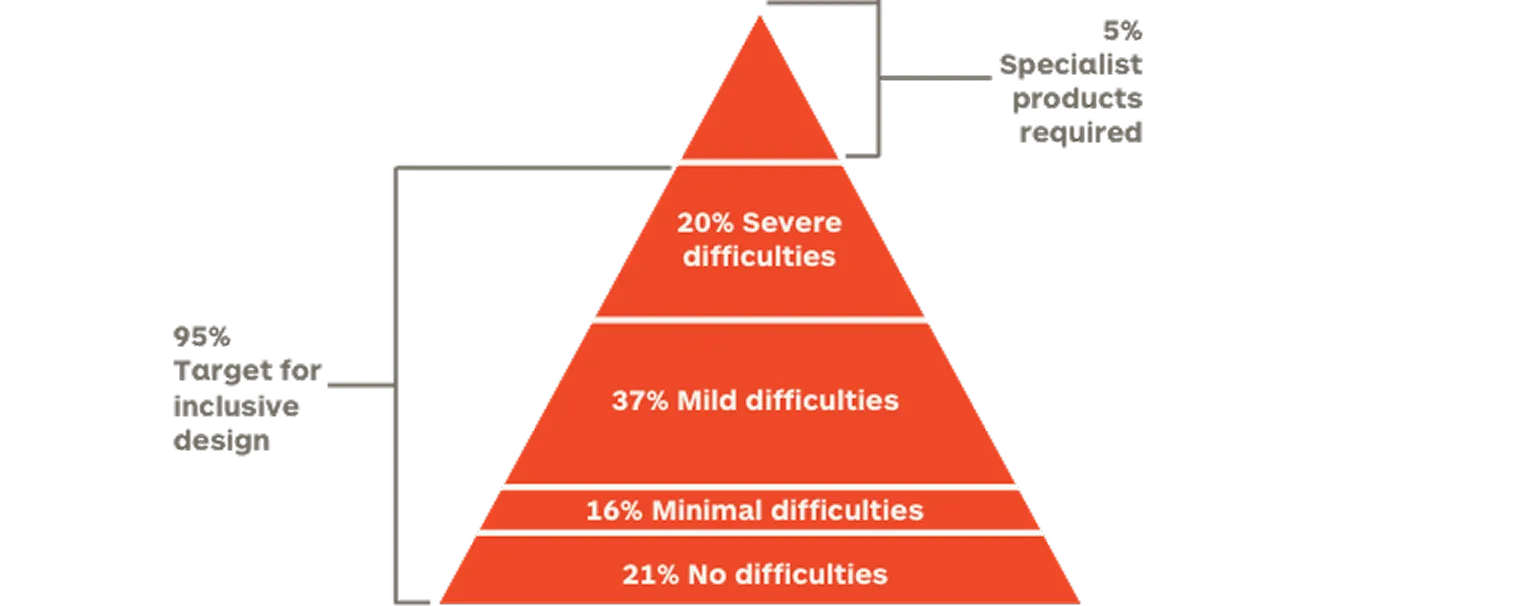
Inclusive by Design: Smarter, Broader, Better
How can we create experiences that work well for more people, in more situations, more of the time?
Design has always been about solving problems. But when we widen the lens—when we recognize that human diversity is not a fringe case but the default—we move from simply solving problems to solving better ones.
Inclusive design is not quite the same as making your products accessible, although it should have that outcome. When we talk about accessibility, we make sure people with disabilities can have access to the information somehow. With inclusive design you design products and services that are accessible to, and usable by, as many people as reasonably possible without the need for special adaptation or specialized design (University of Cambridge).

The value of inclusion
If we shift to thinking about making our products usable to a wide range of people with a wide range of abilities, we will be excluding fewer people by making our designs work for people with permanent, temporary, or changing disabilities. It’s not about solving for one group; it’s about providing value to many. A parent juggling a toddler and a phone, a commuter navigating a noisy train, an aging user adjusting to slower reflexes—each of these moments is an opportunity to design something better.
By considering a range of physical, cognitive, and situational needs from the start, we build systems that don’t just work under ideal conditions, but under real ones. Let’s take a look at some real world examples:
- Curb cuts were created for people with wheelchairs, but they are useful for people with strollers, cyclists who need to get off the street, shopping carts, etc.
- OXO brand utensils were created by Sam Farber, the founder, for his wife with arthritis and were originally marketed towards people with disabilities. Today, many of their products are international best sellers because they are easy and pleasant to use for everyone.
- The Washington Post and Medium both upped their body copy font size to 20 and 21 respectively. Larger font sizes increase readability, scannability, and usability. At Cloudberry we are starting to recommend 18-20px as the base font size.
- Handicap door openers are another example that were first put in place to give access to people in wheelchairs, but they are useful to everyone! Whether you are carrying a large box, wrangling your kids, or just don’t like touching door handles, they are a great invention.
Implementing inclusive design
- Research – Talk to people with a range of abilities. Not just about their needs, but about how they experience the world. Inclusive research leads to richer insights and greater empathy, which behavioral science confirms is critical for effective design thinking.
- Analysis – Create diverse personas. In all of your personas, have a section dedicated to diversity that can include areas such as; Ability, Aptitude, Attitude, and Assistive Technology.
- Design – Refer back to your research findings and personas when designing features and interactions. When user testing as part of the design process, try to include people with different levels of ability in your sessions.
- Development – Follow accessibility best practices, of course. But go further. Collaborate across teams to ensure inclusive thinking doesn’t get lost in handoffs. Build check-ins and feedback loops that keep inclusion front and center.
Better for everyone
At its core, inclusive design reflects a shift in mindset: from “fixing” problems for a specific group to anticipating needs across a spectrum of human experiences. And the payoff? Better products. More engaged users. Broader market reach. And a brand that stands for something meaningful.
So yes, inclusive design helps people with disabilities. But it also helps:
- The tired commuter using your app one-handed.
- The shopper distracted in a noisy store.
- The senior struggling with small font on a bright screen.
- The parent toggling between tabs during a chaotic morning.
It even helps you—future you. Because at some point, we all benefit from a world designed to include, not exclude.